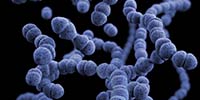Understanding the Role of Combustion Particle Pollution and Upper Airway Disease In Utah

The project will be a new-cross campus partnership between the CoE (Dr. Kelly, ChE, PhD, PE), CofM (Dr. Jeremiah Alt, Surgery, Division of Otolaryngology MD, PhD), and CofPh/CoE (Dr. Hamid Ghandehari, Pharmaceutics/Bioengineering, PhD). This team will tackle a critical Utah problem, understanding how particle pollution affects chronic rhinosinusitis (CRS), a debilitating disease of sinonasal inflammation. Treating patients with CRS costs $64B annually, accounting for 5% of the total US health care budget, with an estimated additional $13B from lost work productivity. Despite its prevalence and the financial, health, and societal burden, CRS remains an under-researched epidemic with limited effective treatment options. The project will specifically address the lack of a mechanistic understanding of CRS. It also addresses the University’s four strategic goals: it will 1) develop new knowledge regarding how air pollution affects mucociliary clearance central to the etiology of CRS and position the team to submit a successful NIH R01 application to the NIAID (primary) and NIEHS (secondary), 2) promote student success by providing an opportunity to work in a truly interdisciplinary team, with the potential to transform the lives of CRS patients, 3) lead to strategies to educate patients with CRS with the means to mitigate exacerbations, 4) contribute to our understanding of one of the region’s most challenging problems – poor air quality – and its associated health effects.
Current Status
2021-09-13
Goal
This project is tackling a critical Utah problem, understanding how particle pollution affects chronic rhinosinusitis (CRS), a debilitating disease of sinonasal inflammation. Treating patients with CRS costs $64B annually, accounting for 5% of the total US health care budget, with an estimated additional $13B from lost work productivity. Despite its prevalence and the financial, health, and societal burden, CRS remains an under-researched epidemic with limited effective treatment options. The project will specifically address the lack of a mechanistic understanding of CRS. It will position the team to submit a successful NIH R01 application to the NIAID (primary) and NIEHS (secondary).
Approach
The team initially purchased and subcultured human nasal epithelial primary cells (HNEpCs) and exposed these to brake wear and combustion particles. Brake wear particles were added to the study because they are becoming more environmentally relevant as vehicle emissions decrease, and they contain metals, which are likely to induce a biological response. The team also performed preliminary experiments in an electrostatic ALI system to evaluate the effect of ALI exposure on the HNEpCs. After preliminary experiments with purchased HNEpC cells, we moved to ex vivo air-liquid-interface (ALI) cultures of sinonasal epithelial cells derived from patients with CRS.
In these studies, IL-6 and IL-8 served as markers of the T-helper cell type 1 (Th1 or T2 low) inflammation induced by pollution particle exposure with very low (VLBW; 1 µg/cm2), low (LBW; 3 µg/cm2), medium (MBW; 6 µg/cm2), high (HBW; 12 µg/cm2), or very high (VHBW; 24 µg/cm2) brake wear particles. Aliquots of media (250 µL) were collected 1, 4, 8, 12, and 24 hours after particle exposure and subjected to quantification of secreted IL-6 and IL-8 using enzyme-linked immunosorbent assays (ELISA) (Biolegend kits). Cell viability was evaluated using the CCK-8 Cell viability by Cell Counting Kit-8 (CCK-8) assay kits (Dojindo Molecular Technologies, Inc., Rockville, MD) according to the manufacturer’s instructions.
Results
The preliminary results indicated that ALI exposure to combustion and brake wear particles did not adversely affect cell viability (viability > 90%).
The inflammatory response results demonstrate that inflammation peaks approximately 8 hours after particle exposure, and that only the highest concentration of brake wear particles had an inflammatory effect on ALI cell cultures.
Additional Outcomes
This new collaboration led to several complementary outcomes, including one grant proposal related to CRS and smoke exposure and three publications.
Publications
A. Gill, G. Oakley, M. Error, K. Kelly, R. Orlandi, J. Alt (2021) Optimizing clinical productivity in otolaryngology clinic during the COVID-19 pandemic. International Forum of Allergy & Rhinology. 1–3 doi/10.1002/alr.22766
A. Gill, K. Kaur, M. Error, P. Shipman, K. Kelly, J. Alt (2021) Nasal endoscopy, room filtration and aerosol concentrations during live outpatient encounters: a prospective, case-control study International Forum of Allergy & Rhinology https://doi.org/10.1002/alr.22874
Collaborators
Kerry Kelly
College of Engineering
Chemical Engineering
Project Owner
Jeremiah Alt
School of Medicine
Department of Surgery, Division of Otolaryngology
Hamidreza Ghandehari
College of Pharmacy
Pharm & PharmaceuticalChemstry
Project Info
Funded Project Amount$30K
Keywords
Air quality, upper airway disease, chronic rhinosinusitis, particulate matter
Project Status
Funded 2020
Poster
View poster (pdf)
